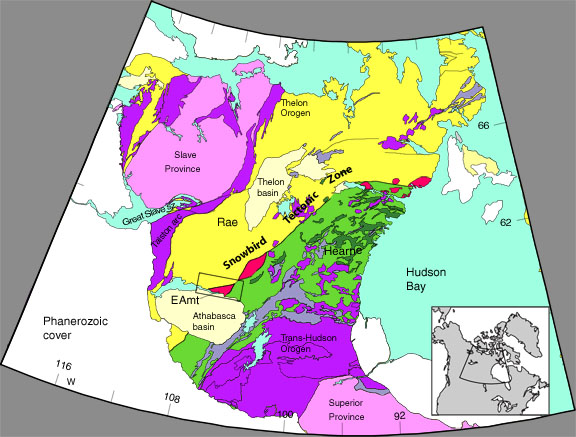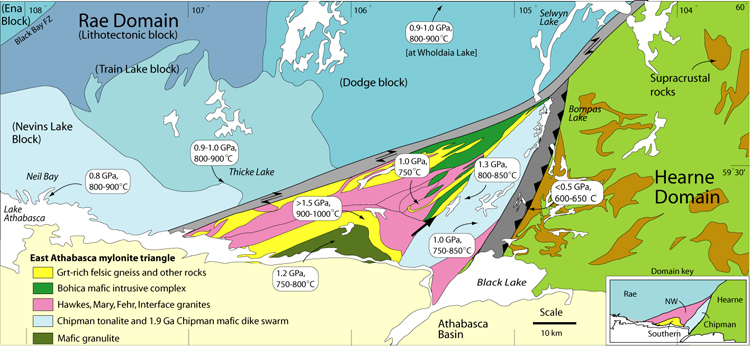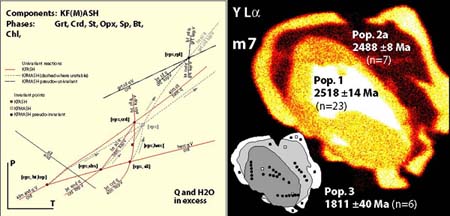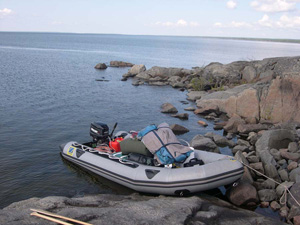Western Canadian Shield

Introduction
The Snowbird Tectonic Zone is one of the most striking and enigmatic features in the Canadian Shield. This 2800 km long system of structural lineaments and geophysical anomalies forms the boundary between the Rae and Hearne crustal domains (above; Goodacre et al., 1987). Field-based studies have shown that the southern part of the Snowbird zone is characterized by an assemblage of ductile shear zones and a series of high-pressure granulite-facies metamorphic complexes including the East Lake Athabasca region shown below.
Some of the most distinct components of this high-pressure terrane have been described separately, including a spectacular deep-crustal mafic dike swarm (Williams et al., 1995), some of the oldest eclogites in the planet (Snoeyenbos et al., 1995; Baldwin, 2003), a regional charnockite batholith in transition to garnet granulite (Williams et al., 2000), and a major exhumation-related bounding shear zone that marks a vertical juxtaposition of at least 20 km (Mahan et al., 2003). In short, the region is a amazing laboratory for studying deep crustal processes and those by which regionally extensive high-pressure terranes are exhumed.
The purpose of my dissertation work is to understand the nature of regional exhumation of the terrane. To do this I am focusing on a number of distinct high strain zones that dissect the region and that may have been active during different stages of the exhumation history. This involves characterization of their kinematic history, the metamorphic evolution of the rocks during deformation, and determination of relative and absolute timing of metamorphism and deformation. My approach is integrated so that I use a wide variety of tools including field and microstructural analysis, metamorphic petrology (P-T grids, P-T and P-X pseudosections, quantitative thermobarometry), and both electron microprobe monazite and ID-TIMS U-Pb geochronology.
Click on the map or on the list below to see more details of these areas and current research results.

| Some Current Research Topics | |
| Hydrous fluid flow in shear zones and effects on metamorphism and accessory phase petrogenesis including the use of monazite to date metamorphic reactions. Click here or on the image to the left to see a recent poster on this topic. |  |
| Deformation and reaction textures in a distinct series of mafic granulite bodies Cora Lake area provide valuable information about the early tectonometamorphic history of the region and demonstrate the important role of heterogeneous deformation in preserving this record. Click here or on the image to the left to see a recent poster on this topic. |
|
 |
 |
Fresh water lakes abound in northern Saskatchewan and access to the area is available only by float plane. From base camps on the lakes, the easiest way to get around is by boat